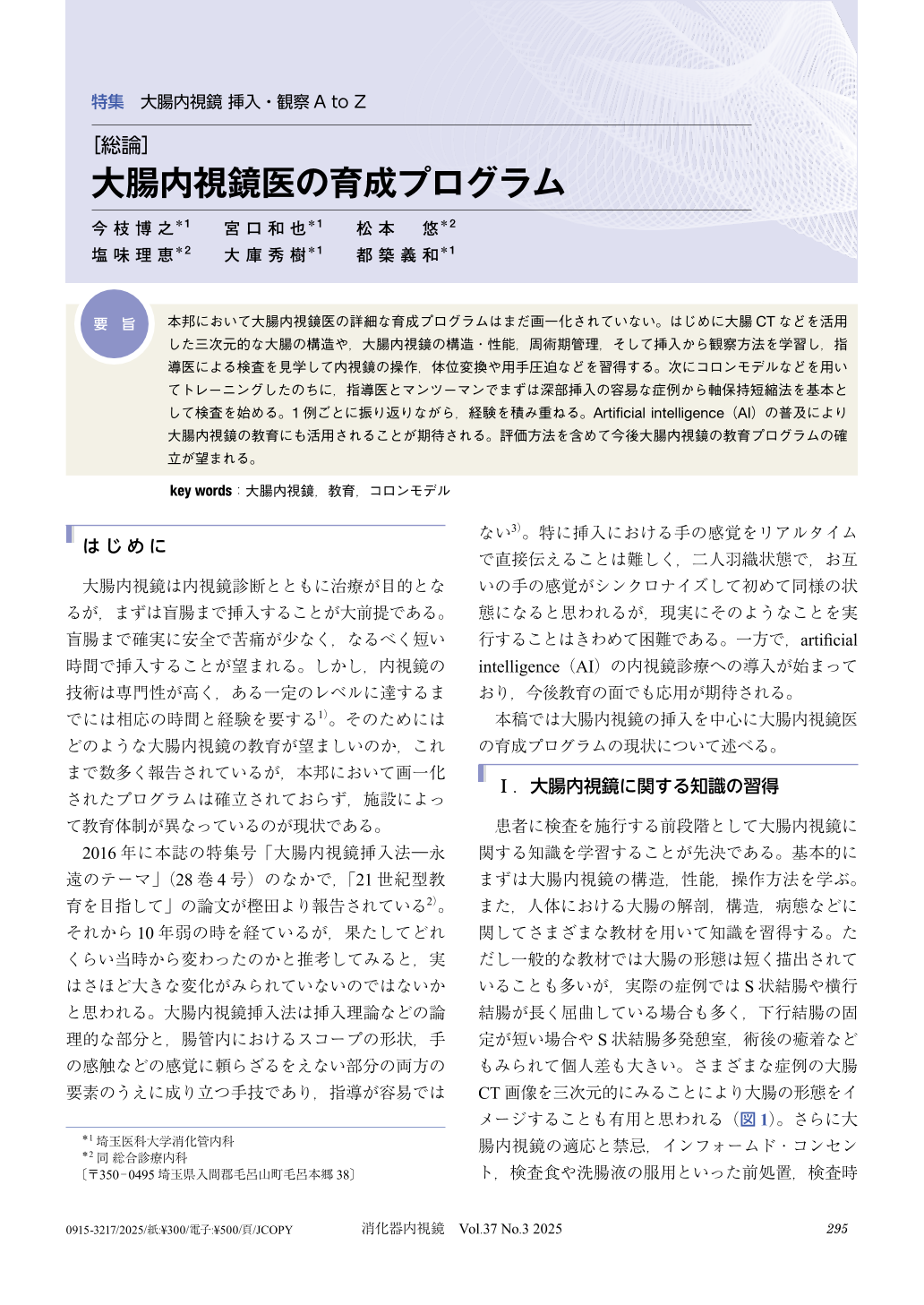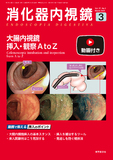Japanese
English
- 有料閲覧
- Abstract 文献概要
- 1ページ目 Look Inside
- 参考文献 Reference
要旨
本邦において大腸内視鏡医の詳細な育成プログラムはまだ画一化されていない。はじめに大腸CTなどを活用した三次元的な大腸の構造や,大腸内視鏡の構造・性能,周術期管理,そして挿入から観察方法を学習し,指導医による検査を見学して内視鏡の操作,体位変換や用手圧迫などを習得する。次にコロンモデルなどを用いてトレーニングしたのちに,指導医とマンツーマンでまずは深部挿入の容易な症例から軸保持短縮法を基本として検査を始める。1例ごとに振り返りながら,経験を積み重ねる。Artificial intelligence(AI)の普及により大腸内視鏡の教育にも活用されることが期待される。評価方法を含めて今後大腸内視鏡の教育プログラムの確立が望まれる。
In Japan, training programs for colonoscopists have not yet been standardized. First, trainees learn the three-dimensional structure of the colon using CT colonography, the structure and performance of colonoscopes, perioperative management, insertion and observation methods. The trainees learn endoscopic manipulation, positional changes, and manual compressions during observation colonoscopy by the trainers. After training using a colon model, the trainees begin examinations one-on-one with trainers, starting with cases in which deep insertion is easy, based on the axis retention shortening method, and they accumulate experience by reviewing each case. The widespread use of artificial intelligence (AI) is expected to be utilized in the education of colonoscopy. It is desirable to establish training programs for colonoscopists, including evaluation methods.

© tokyo-igakusha.co.jp. All right reserved.


